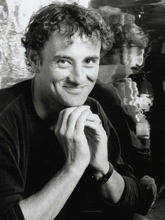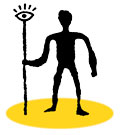WATERLIFE is a film I have been working toward throughout my 30-year career as a writer and documentary filmmaker.
My journalistic engagement with the Great Lakes began at my university newspaper (in St. Catharines, Ontario) where I covered the then-emerging disaster at the Love Canal in Niagara Falls, N.Y. A dozen years later, the abandoned neighborhood provided one of the most poignant scenes in The Falls (1990), the first documentary feature that I directed. Last summer, 17 years later, we returned to the area for WATERLIFE to see the Love Canal reborn.
Humanity’s relationship to the natural environment is a theme in most of my work – the Arctic in In The Reign Of Twilight, the Pacific northwest in Stolen Spirits of Haida Gwaii, the north Atlantic in Cod: the fish that changed the world. And I have often used water imagery in films (as in the Edgar Alan Poe story that threads through McLuhan’s Wake). With WATERLIFE I have tried to push take these thematic and cinematic interests further by looking specifically at water, because it provides a very visceral way of exploring anew the old idea that “we are all a product of our environment”. To see water pouring through plants, fish, people, factories, sewage systems and back around again – endlessly -- is to understand what that cliche really means.
To be framed coherently, this idea needed a specific canvass and there is none dearer to me than the Great Lakes. My personal connection is that I have lived on, traveled across, swum, bathed in, drunk and admired the lakes my entire life. And, equally important, I have imagined them in their length and breadth – or at least have tried to with all my might. I was inspired in this by my childhood readings of Paddle To The Sea, Holling Clancy Holling’s classic fable of an aboriginal canoe carved by a little boy that makes its way from north of Superior to the Atlantic. Making WATERLIFE, I thought often of famed director Bill Mason’s film of the tale, which remains one of the most popular films ever created at the National Film Board of Canada.
Over the years, I’ve developed what the geographer Yi Fu Tuan calls a “topophiliac” relationship to the lakes – a true love of a landscape or, in this case, waterscape. I am far from alone. As we traveled the lakes filming WATERLIFE we met many people who have a life-long engagement with the lakes and who are as passionate about their beauty as they are worried about their fate. Protheus Goodchild, an Anishinabe elder who lives on the north shore of Superior, put it succinctly: “the world is like a human body, the water is our blood. Everybody knows what happens when you put poison in your blood.”
Everybody knows, but the 35 million or so people whose blood is (literally) made up of Great Lakes water have an astonishing ability to forget that, especially if they live in big cities. While people who live on Lake Superior will still drink straight from the lake, the majority of people who live on Lakes Erie and Ontario are afraid to even swim in them. We assume that the water is polluted, so we shrug, buy water in plastic bottles and take the kids to a spray park -- forgetting about all the ways lake water still seeps into our lives. Thus do we spiral toward an utterly preventable disaster from which we may not be able to recover, despite water’s nearly magic ability to renew itself.
In December 2005, 60 of the top scientists involved in Great Lakes research, issued an unprecedented statement which argued that the Great Lakes’ ecosystem – its ability to generate fish and clean its water – is enduring so many stresses that it may be nearing “irreversible collapse”. They said that this collapse will probably come in a non-linear way – not a continued slow decline but a sudden crash.
So, my journalistic hope for WATERLIFE is that it will alert Americans and Canadians to the extreme threats facing the great body of water they share; which, indeed, some would say they hold “in trust”, since it comprises 20 per cent of the surface fresh water on Earth.
My hope for WATERLIFE, as a filmmaker, is the same as it is for every film: to take viewers to a familiar place and help them see it anew, as if for the first time.
Kevin McMahon is a journalist, author and writer.

Kevin began his career as a newspaper journalist at the St. Catharines Standard before shifting to documentary film in the mid-1980s. His films have been described as “visually stunning and brilliantly conceived” (Globe and Mail); “poetic” and “never shirking the difficulties in complex issues” (Take One)
Kevin has directed 18 documentaries and produced dozens of hours of non-fiction television. His work has focused on environmental themes, viewed explicitly -- through topics such as Niagara Falls, the cod fishery and nuclear weapons – and obliquely – in stories about technology guru Marshall McLuhan and the nature of human intelligence.
Kevin’s work has garnered a variety of awards, including several Geminis, a Webby, top honours from the Canadian Centre for Investigative Journalism and a Governor General’s Award nomination for public service journalism. The Canadian Film Institute and Hot Docs have held retrospectives of his work. In 2011, Kevin was named Canadian Eco Hero by the Planet in Focus film festival.
Kevin is a frequent guest in film classes and devotes much energy to aiding younger filmmakers, both informally and through cultural institutions. He has been a mentor in programs run by Hot Docs, the Ontario Media Development Corporation and the Documentary Organization of Canada.



